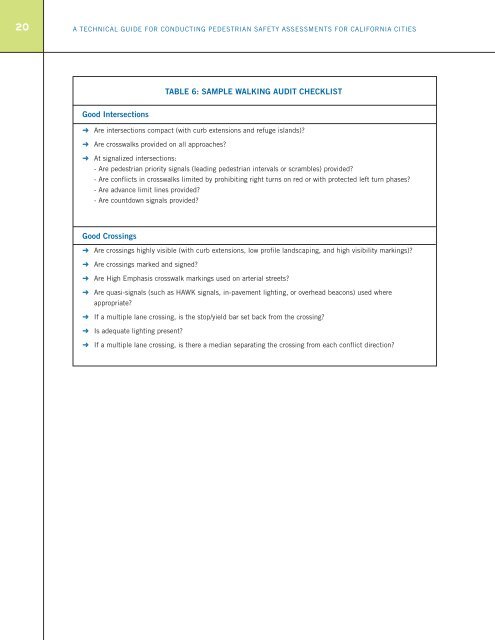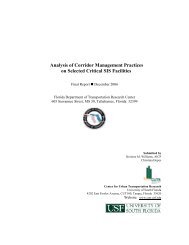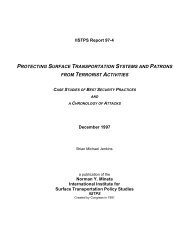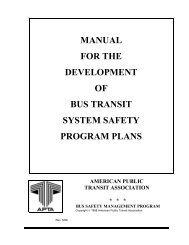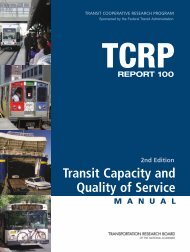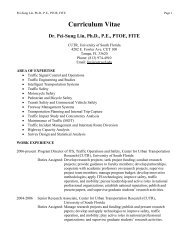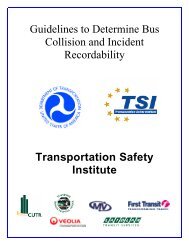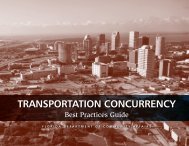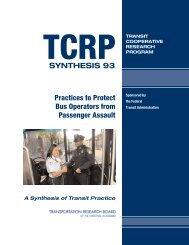a technical guide for conducting pedestrian safety assessments
a technical guide for conducting pedestrian safety assessments
a technical guide for conducting pedestrian safety assessments
Create successful ePaper yourself
Turn your PDF publications into a flip-book with our unique Google optimized e-Paper software.
20 A TECHNICAL GUIDE FOR CONDUCTING PEDESTRIAN SAFETY ASSESSMENTS FOR CALIFORNIA CITIES<br />
TABLE 6: SAMPLE WALKING AUDIT CHECKLIST<br />
Good Intersections<br />
➜ Are intersections compact (with curb extensions and refuge islands)?<br />
➜ Are crosswalks provided on all approaches?<br />
➜ At signalized intersections:<br />
- Are <strong>pedestrian</strong> priority signals (leading <strong>pedestrian</strong> intervals or scrambles) provided?<br />
- Are conflicts in crosswalks limited by prohibiting right turns on red or with protected left turn phases?<br />
- Are advance limit lines provided?<br />
- Are countdown signals provided?<br />
Good Crossings<br />
➜ Are crossings highly visible (with curb extensions, low profile landscaping, and high visibility markings)?<br />
➜ Are crossings marked and signed?<br />
➜ Are High Emphasis crosswalk markings used on arterial streets?<br />
➜ Are quasi-signals (such as HAWK signals, in-pavement lighting, or overhead beacons) used where<br />
appropriate?<br />
➜ If a multiple lane crossing, is the stop/yield bar set back from the crossing?<br />
➜ Is adequate lighting present?<br />
➜ If a multiple lane crossing, is there a median separating the crossing from each conflict direction?


